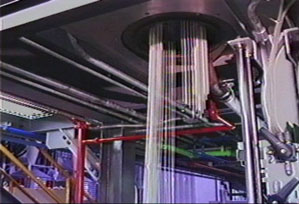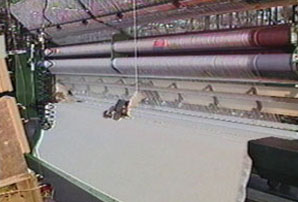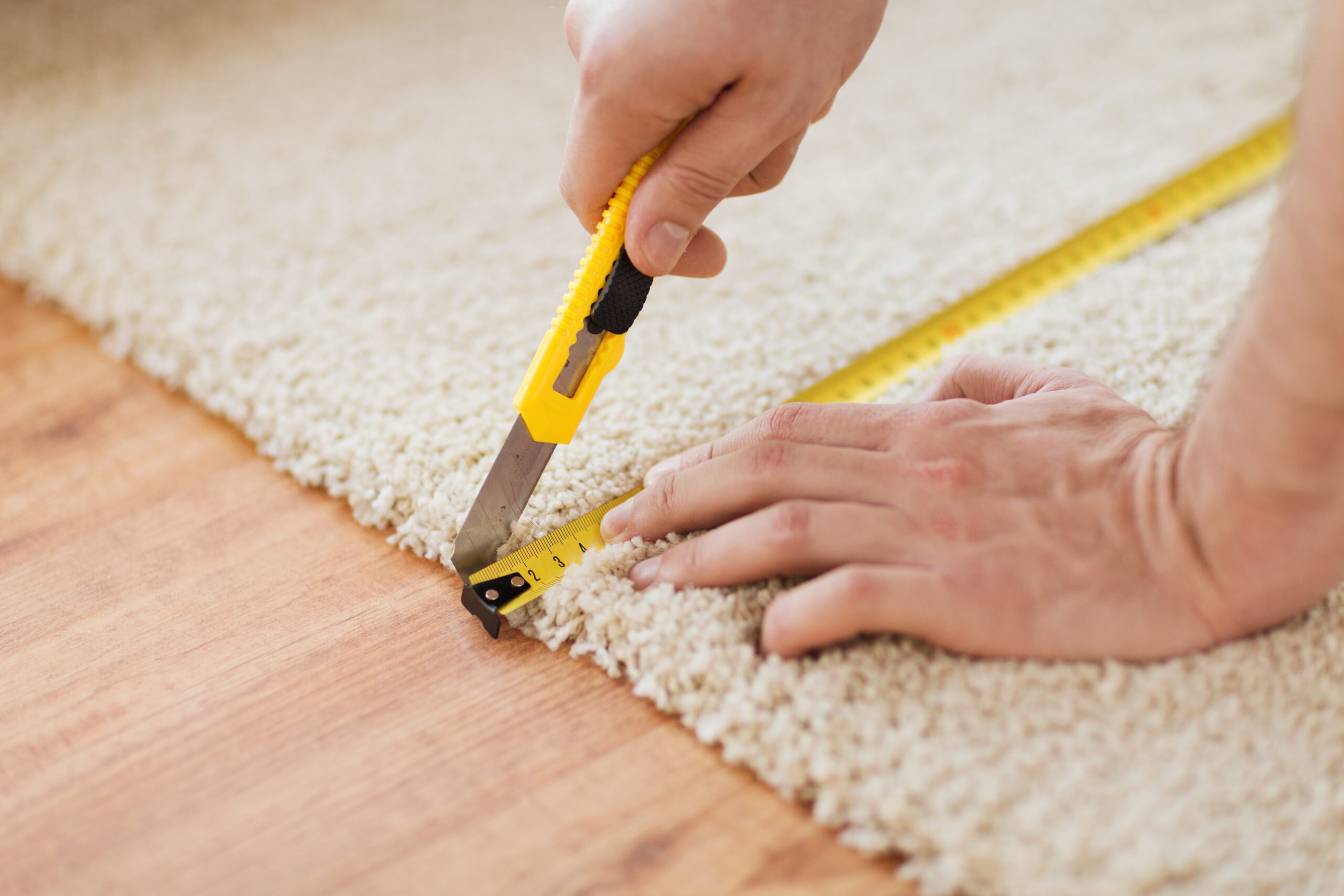Carpet - How It's Made
Wall-to-wall knowledge on how carpet is manufacturedWall-to-wall knowledge on how carpet is manufactured

Now, before we take you through how carpet is made, remember that, when selecting carpet, thicker is not always better. What you need to look at is the construction of the carpet.
You want a tight twist in each yarn, not loose and frayed at the end.
A firm, dense pile is also the mark of a quality carpet. How to check the density? Bend a corner of the carpet and see how much backing shows. The more backing you see, the less dense and durable the carpet.
And for high traffic areas, consider lower profile carpets that won’t have the potential to matte and crush.
But we’re getting ahead of ourselves. To start at the beginning, check out our materials and manufacturing story that follows.

To understand carpet is to know about fiber
The rest is natural fiber, most commonly wool. First, let’s look at the most common synthetic fibers.
Synthetic fibers are usually made up of one of three materials: nylon, polypropylene or polyester. All three are created by similar chemical processes using oil and natural gas.
Nylon leads the way
Almost 75% of carpet today is made of nylon and, compared to the other fibers below, it performs the best overall. Nylon is the leader in: appearance retention, fade and heat resistance, soil and stain resistance, and color and styling. The highest performance nylon is Type 6.6, which has a tighter molecular construction, making the carpet more resistant to stain penetration.
Polypropylene is popular and naturally resistant
Polyester’s performance satisfies many
Wool is natural but expensive
Berber, now considered a type of carpet construction, actually comes from the name of a group of North African sheepherders called the Berbers. The Berbers were known to produce very coarse wool, with characteristic color flecks in their yarns.
Although wool doesn’t stand up to abrasion and moisture as well as synthetics, it cleans well and is known to age gracefully. Wool is the most expensive carpet fiber, and represents less than one percent of the U.S. carpet market.

How carpet is made is a 3-part process
Tufting begins with the process of weaving the synthetic or staple fiber into a primary backing material. The primary backing material is usually made of woven polypropylene, and its main value is to provide a base cloth to hold the yarn in place while the tufting happens.
Here, an alternative step may occur
The stitch rate of a carpet is the measure of how close the yarns are together. Stitch rate is measured in penetrations, or tufts, in a given length of carpet, usually an inch. The stitch rate is controlled by how fast the carpet is moved through the tufting machine. Seven to eight tufts per inch is a good number, while three or four is pretty poor.
Face weight is determined by the actual amount of fiber per square yard, and is measured in ounces. A typical carpet may have a face weight of 35 to 45 ounces for example.
Finally, density is a measure of how tightly the yarn is stitched into the primary backing. Higher density carpet will typically wear better than low density carpet.

The second step of carpet manufacturing is the application of dye
Now the carpet is taken through one of two dyeing processes.
The first method of dyeing is called yarn dyeing, or sometimes pre-dyeing, where the color is applied to the yarn prior to tufting.
The advantages of all yarn dyeing methods include good side-by-side color consistency, large lot sizes, and uniformity.
The second method involves applying color to the yarn after the carpet has been tufted.
This method is called carpet dyeing. There are several carpet dyeing methods in use, each producing a unique end result.
The first technique, often referred to as Beck, or batch dyeing, involves stitching the ends of the carpet together, and then running the tufted carpet loop through large vats of dye and water for several hours. The Beck process is ideal for smaller production runs, and heavier face weight products.
Continuous dyeing is a similar process to Beck dyeing, but involves running the carpet through several processes in addition to just the dye application. Continuous dyeing applies the color directly to the carpet face by spraying or printing. This process is also used to create multicolor or patterned effects in the carpet.
Screen printing is another common method of carpet coloring, where color is applied through anywhere from one to as many as eight silk-screens.
The major benefits of carpet dyeing, that is dyeing the carpet after the tufting process, are greater color flexibility, and lower cost.

The third and last step in the manufacturing of carpet is the finishing process
This process is typically a single production line that completes the final stage of the carpet construction.
In the finishing process, a coating of latex is applied to both the tufted, dyed carpet’s primary backing, and also to secondary backing. Secondary backing is typically made of a woven synthetic polypropylene material.
The two parts are squeezed together in a large heated press, where they are held firmly to preserve their shape.
Shearing, one of the last stages in the manufacture of carpet, is the process of removing all of the little loose ends and projecting fibers that might have been created during the tufting process. It also helps achieve the yarn’s tip definition of the finished carpet.
Finally, each carpet is carefully inspected for color uniformity and other manufacturing defects before it is rolled, wrapped, and shipped.
That’s our story on how carpet is made. We believe that the right knowledge can be as functional and practical as carpet itself. We also hope that the information we’ve featured here leads you to a better understanding of how this beautiful and versatile product is created, and helps you be a better, smarter, more savvy carpet shopper.







